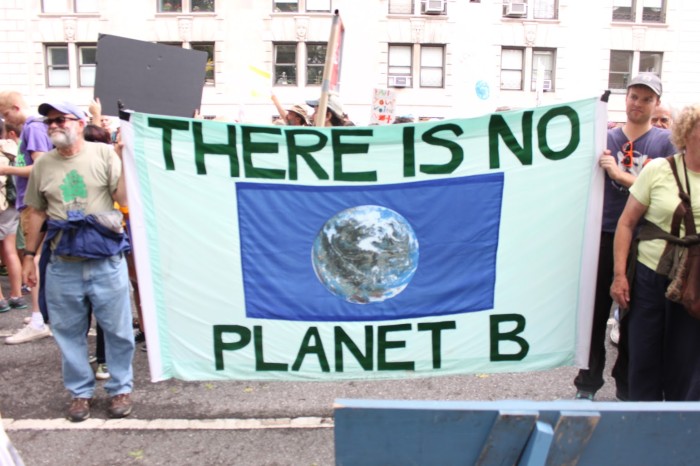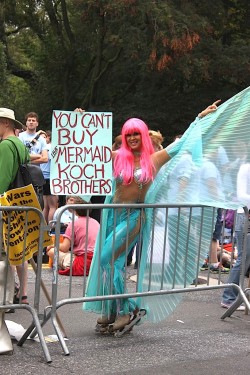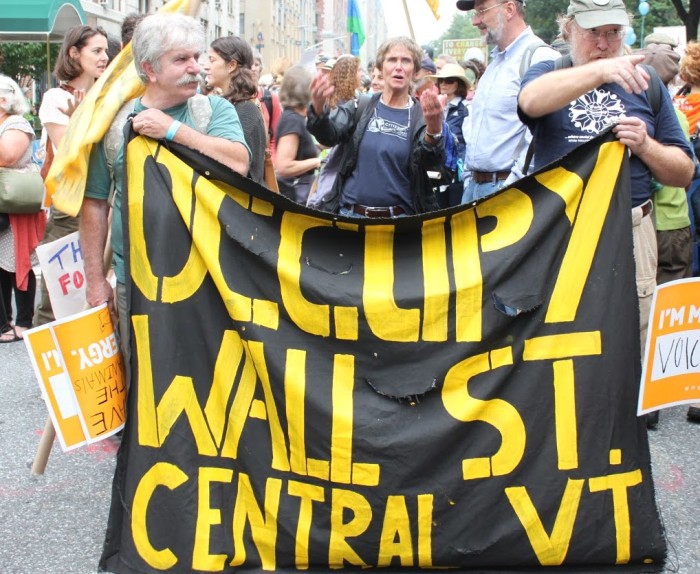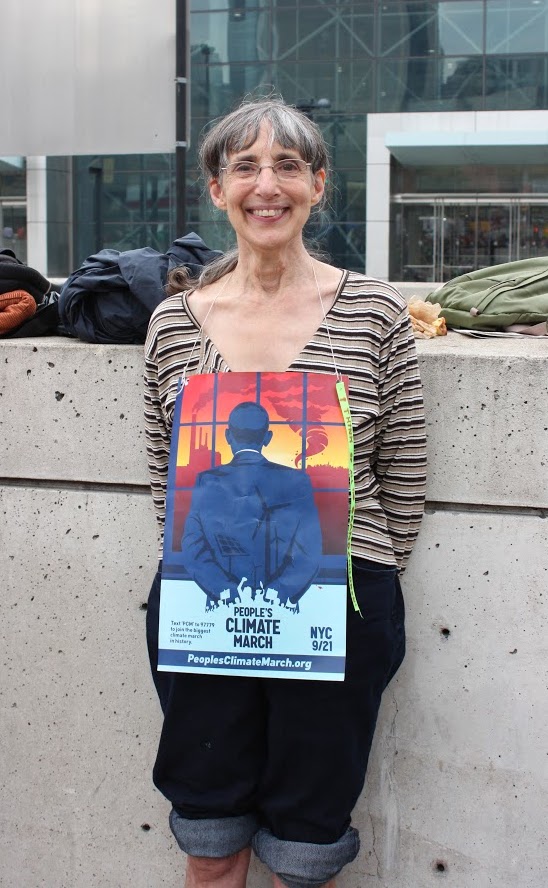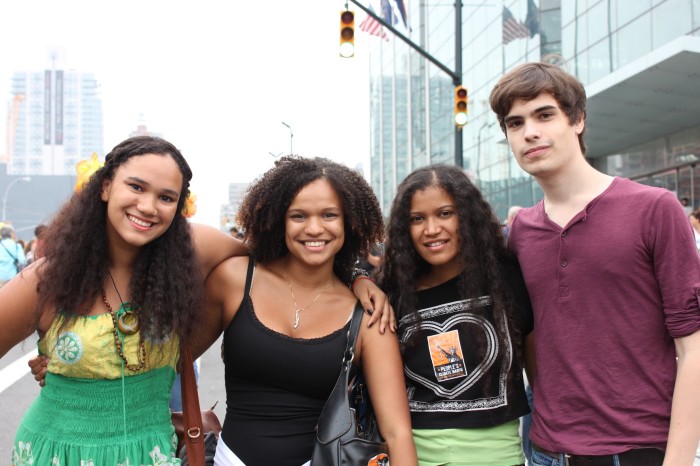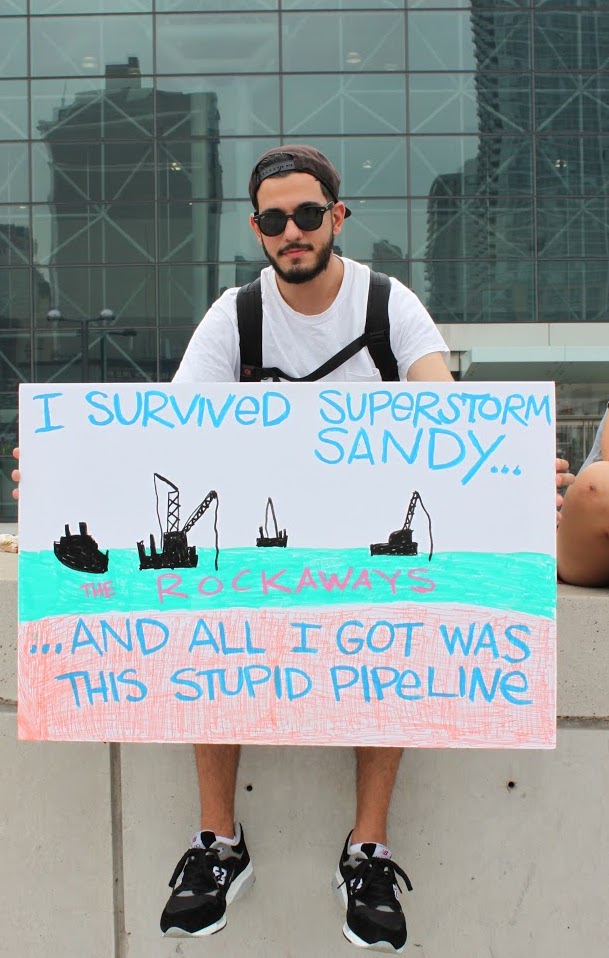Last Sunday, in the humidity that characterizes the end of New York City summer, spectators and participants at 81st St. in Manhattan milled around the barricades, hoping to march as promised before rain set in. The excitement was palpable, despite delays. To the chant of “It’s a bullshit, get off it! The enemy is profit!” and the oft-repeated, “Let us march!” protesters inside the march lines bounced beach balls painted like the globe, and streaked themselves with face paint. Banner and sign denoted the variety of groups and causes that had turned out for the People’s Climate March–one of 2,700 such events around the globe that day organized to coincide with a UN meeting of over 120 world leaders.
Speaking to the UN Climate Summit, President Obama acknowledge the demand of the public to respond to climate change: “Our citizens keep marching. We cannot pretend we do not hear them,” he said. “We need to answer the call.”
No matter what individual causes brought out the tens of thousands of protesters on Sunday, September 21st, the event dubbed “The People’s Climate March” had a place for everyone. The banners and signs that participants carried represented everything from social justice to food politics. There were signs asking recognition for refugees and the end of capitalism, and overwhelmingly, demanding action on the issue of climate change.
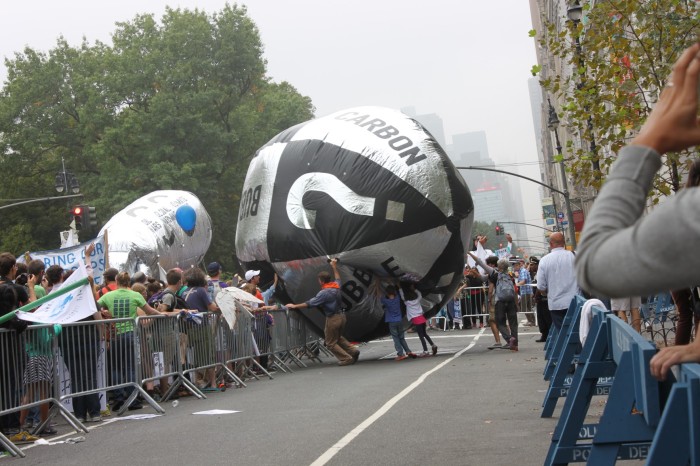 The streets north of Columbus Circle were filled for nearly twenty blocks, with protesters organized into narrative blocks that attempted to show the scope of those affected by climate change. The march was headed by groups representing indigenous communities as well as “other Frontline Communities,” with respective costumes. Other blocks advocated for labor and social movements; clean energy; anti-corporate efforts; and scientific and religious communities.
The streets north of Columbus Circle were filled for nearly twenty blocks, with protesters organized into narrative blocks that attempted to show the scope of those affected by climate change. The march was headed by groups representing indigenous communities as well as “other Frontline Communities,” with respective costumes. Other blocks advocated for labor and social movements; clean energy; anti-corporate efforts; and scientific and religious communities.
A final narrative block was entitled “To Change Everything, We Need Everyone,” calling out to all groups regardless of affiliation. All together turnout has been estimated at 400,000, making the event one of the largest environmental protests in U.S. history.
From behind the barricades, a group from Occupy Wall Street Central Vermont, explained there were some 40 buses coming from Vermont, part of more than 550 buses expected by organizers from across the country. Further along the route, an entire extended family asked for their picture. They had come from all over the USA and Europe to meet in New York City for the march. Behind them tourists are posing for selfies along the barricades with giant puppets. There was a distinct feeling of celebration, despite the seriousness of the cause.
May Boeve, 350.org executive director and March organizer, responded to the President’s words to the UN Climate Summit, saying, “The march in New York, and marches around the world, were led by people who suffer already the effects of climate change…The hundreds of thousands who marched on Sunday represent a burning demand for action to save a world on fire.” Other major organizers such as activist, journalist and climate advocacy icon Bill McKibben, responded critically as well. Said McKibben via 350.org, “President Obama says America has ‘stepped up to the plate’ — and dropped down a bunt single when we’re behind by 10 runs in the 9th inning.”
The people who have come to New York City have plenty to say to those in power, not just to the President and the UN, but also the major industries and power structures that have allowed the problem to go on for so long. Margaret Lobenstein, from Pioneer Valley, MA, said she came “for the future of children of the world.” The first march she ever attended, where Martin Luther King Jr. made his famous “I Have a Dream” speech, was much smaller, with 15,000 fewer protesters. In her estimation, the march had already exceeded her expectations. “That we’re not alone, that we’re all here…it’s a good reminder of how many different people care about this issue. It makes us stronger.”
At the end of the march, an area was set up for marchers to organize with each other. Most people used the space to rest their signs and their feet for a few minutes. A group of high school students at this “Block Party” were equally amazed by the turnout. “Normally I’m pretty cynical about large-scale demonstration,” said Ben Kling, of New York City. “But it’s difficult not to think about it all the time when you walk through Times Square and all the lights are on. It’s just insane.” Janet Martinez, who came along to the march with him, was still a bit cynical about the effects of the protest. “I hope all these people and all this energy turn into local action… Make decisions to keep this momentum going in real ways.”
Many people were looking for this sort of local, immediate action out of the protest. Mike Caputo, a high school teacher in Brooklyn, came mostly to support his 200 odd students who attended the march. He also turned out in hope that New York City would recognize its own needs in the changing climate. “After Hurricane Sandy hit…it was just devastating.. We’re talking [about] what we going to do next time to be prepared, to protect our shoreline in our communities. Fast-forward two years [after the hurricane], the Rockaways Lateral Pipeline is being built up the shore…basically all the promises of protection are gone…I don’t know if a natural gas pipeline is what we need.”
He adds, ”Nothing has ever happened in America without people taking to the streets.”
What is your take on the Climate March this past week? Do you feel that it will make a long-term impact?
Also by Haley: How to Grow Your Own Kitchen Garden
Also see: Texas VegFest 2014
Ethical Vegan v. Health Vegan – Does it matter?
__
Photo: Hanna Masaryk

